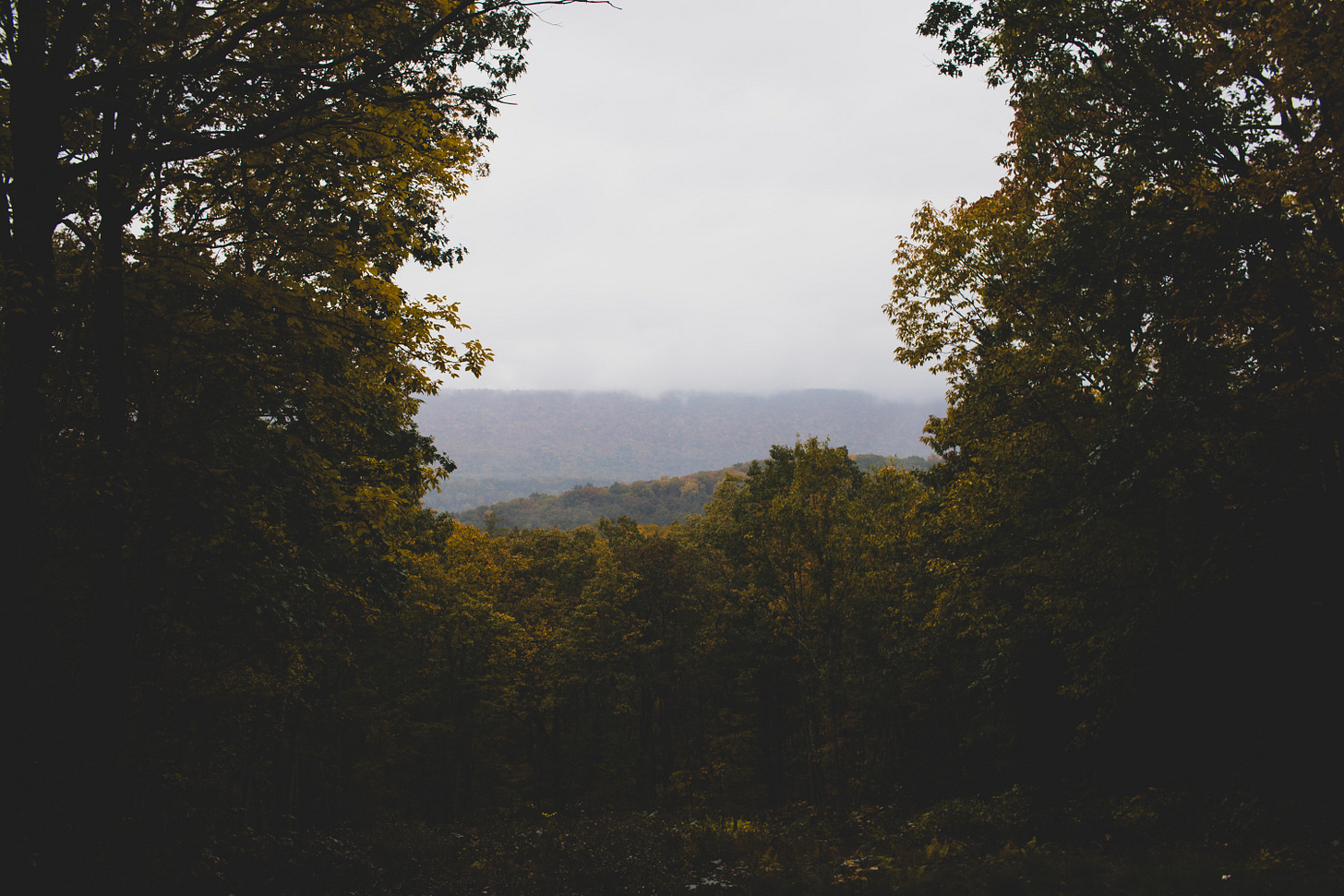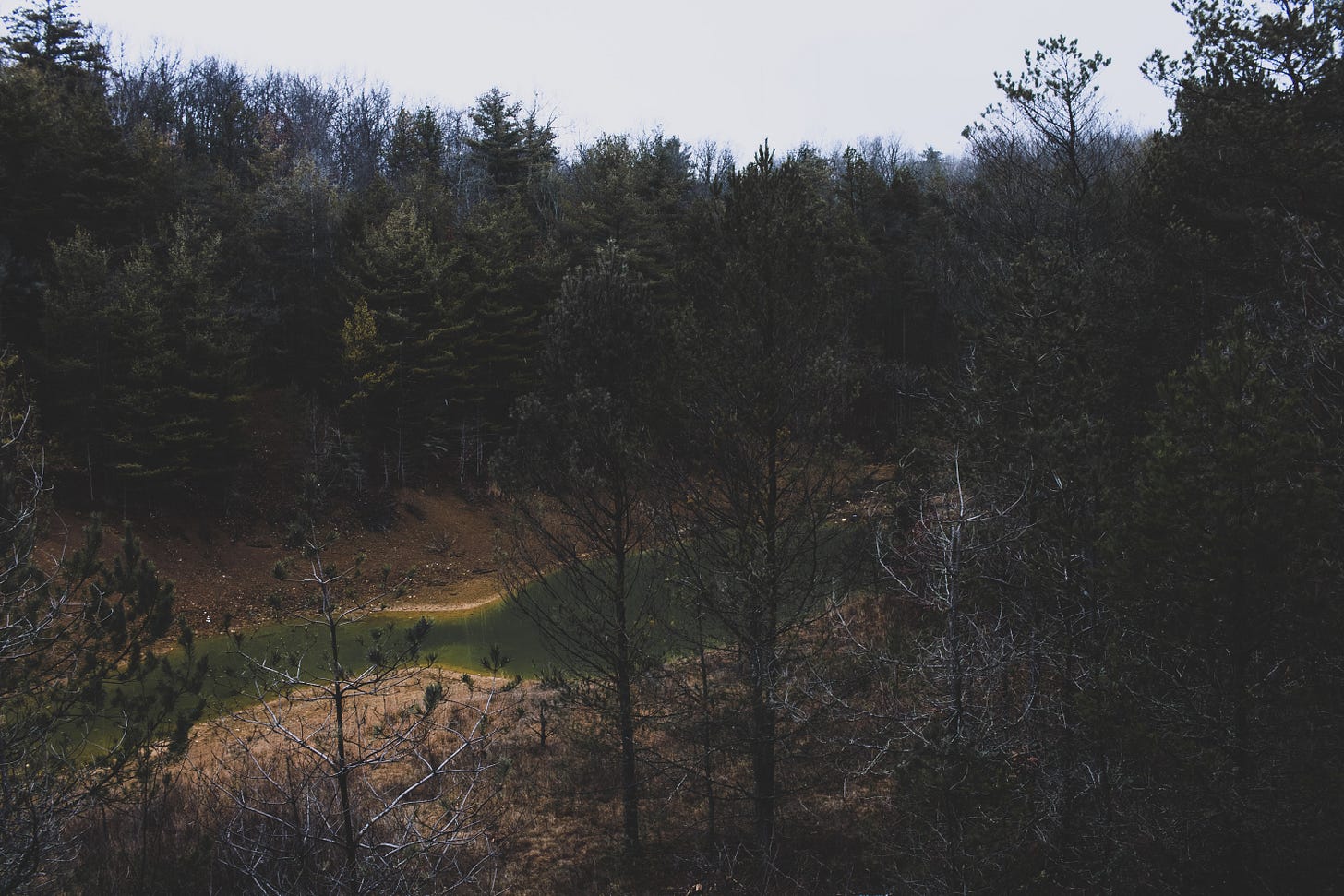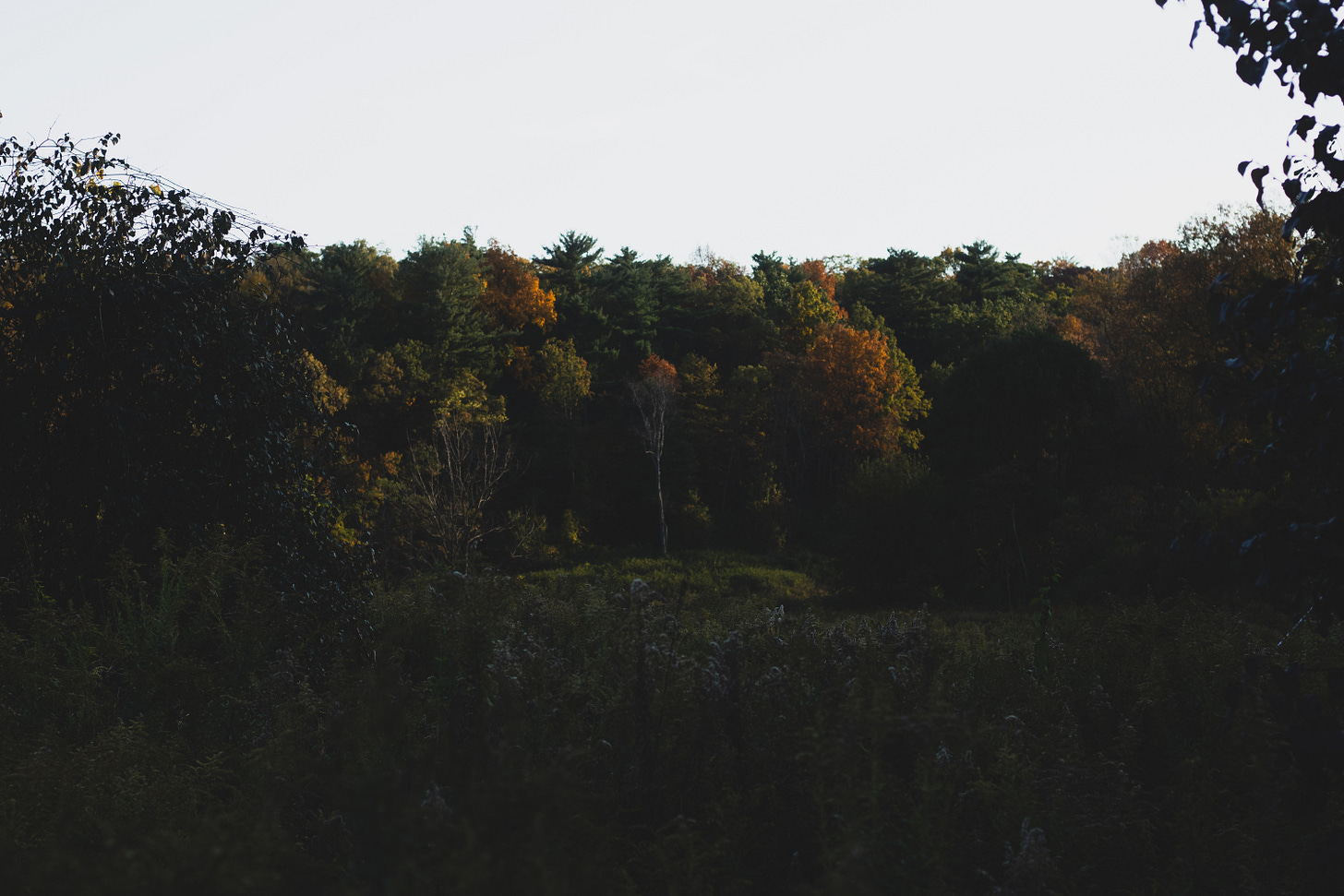Eeriecology
What Nature Remembers and What It Tells Us
For those of you who know me personally, you probably know that one of my side interests is reading, writing, and critiquing speculative fiction. I read a lot, and fiction especially piques my interest when it contains themes and speculations on nature. And since nature is weird, the weirder the fiction, the better.
Last year I wrote an essay for Clarkesworld Magazine that highlights some recent ecological studies showcasing how incomprehensible nature can be. In the piece I also tie these ideas to how nature is often represented in speculative fiction.
The full essay is below, but was originally published in issue 209 of Clarkesworld.
The Eco-Update #3
US forests threatened with increased harvesting
Trump recently signed an executive order to increase logging in US national forests and other public lands. Existing forest management policies have been built on decades of forest science research, which is now being dismantled in order to help pay for Trump's trade war. The changes threaten endangered species and some of the most vulnerable forests in the US. It also makes it more likely that US forests become a source of atmospheric CO2 rather than storing it, at a time when we need to be sequestering as much carbon as possible.
Severe weather warnings and climate predictions at risk as a result of NOAA firings
Despite that last year was the hottest year on record globally, the Trump administration has fired over 1,000 NOAA scientists. These people build and improve the models we rely on in order understand global climate change. But not only that, NOAA data is also the foundation of our weather prediction systems. These firings will cripple an institution that's critical for Americans’ safety, while climate change is dramatically worsening the severity of extreme weather events.
The supreme court weakened rules preventing discharge of raw sewage into water supplies
The conservative-heavy US supreme court ruled to weaken the Clean Water Act, lifting restrictions on water quality requirements for cities when dumping sewage into drinking water sources. The Clean Water Act was a monumental piece of legislation that has drastically improved US water quality, so I think it goes without saying that this is a step in a very wrong direction.
Eeriecology: What Nature Remembers and What It Tells Us
We still don’t know the true nature of nature. The history of life on Earth is long and, at least to some degree, mysterious. For over three billion years, life has been developing, interacting, and evolving into new forms, and these processes occur across scales of time and space that are mostly inaccessible to human observation. The best we can do is systematically measure the things that we can observe, giving us only brief glimpses into the vast, murky ocean of organic life’s complexity. This science—of systematically measuring the fluctuations and interactions of organic life—is called ecology, and it is an eerie science.
Eeriness, as both a physical sensation and a device of speculative fiction, is characterized by an absence of something that should be present, or a presence of something that should be absent. A forest that is silent, instead of filled with the sounds of wildlife, could invite the speculation that something isn’t as it should be, and it is in this speculation that eeriness lives. Our imagination fills in the empty space created by the unknown. In the case of ecology, our full understanding is the absence that should be present.
Take, for instance, a recent study published in Nature Ecology & Evolution, which found that plant traits, such as plant height, leaf area, and seed weight, are not good predictors of ecosystem-level properties like biomass production and carbon storage. This was a shocking paper to the field, partly because it upended the common assumption that traits of the organisms within an ecosystem are linked to the function of that ecosystem. This paper was only the beginning of the debate, though. In early 2023, several different ecologists published a response to the original study, criticizing its approach and reporting that plant traits are, in fact, closely linked to ecosystem function. This was then followed by a reply by the original paper’s authors, who countered that the response discounted the role of environmental conditions in determining ecosystem function. And if this trajectory is getting hard to follow, that’s the point. The debate isn’t over.
Whether genetic traits or environmental conditions are more important, if an ecosystem of cohesively interacting organisms actually exists or is artificially constructed by our interpretation, and the extent to which we actually know anything about how these systems work are all up in the air. The forest is eerie, and we don’t understand it.
This eeriness isn’t new, of course. In fact, Samantha Hind published an excellent essay in Clarkesworld that examines the secretive, often eerie ways that plant life is depicted in contemporary science fiction. Hind discusses plants that want to consume us, transform us, and live with us. Plants are often as alien to us as we imagine actual alien life to be, but eeriness extends beyond just the domain of plants.
In late 2023, Olivia Campbell wrote in National Geographic about Haunted Appalachia, or “the mountains that witnessed the birth of man and a monster.” Here, Campbell gives the age of the Appalachian Mountains—which are over one billion years old—coupled with their high ecological diversity and low human inhabitance, as the reasons for the abundance of myth and supernatural folklore in the area. She writes “...as long as there have been people there, there have been stories.” Campbell highlights Judaculla Rock, a boulder in North Carolina that is covered in over 1,500 petroglyphs dating to about 4,000 years ago. The Cherokee mythology is that the land is home to a giant known as the Lord of Game, who “haunts the land and protects it from overhunting.”
While there is certainly an unusual amount of Appalachian mythology, nature seems to mystify us wherever it is. No less so in fiction. In the classic story of The Birds by Daphne du Maurier (and the subsequent Hitchcock film), the titular birds coordinate attacks on the human characters, acquiring an eerie agency that defies explanation. The late cultural critic, Mark Fisher, notes in his The Weird and the Eerie that what the birds in The Birds threaten is “the very structures of explanation that had previously made sense of the world.” That nature represents something we don’t understand is, perhaps, one of its oldest ways of depicting the natural world.
What is new, however, is the forms that nature’s eeriness is taking. In Apichatpong Weerasethakul’s Memoria (2021), a woman—played by Tilda Swinton—is haunted by a strange sound while traveling through Colombia. The film’s plot revolves around Swinton’s character tracking down the source, and origin, of this mysterious sound. The structure of the film includes long scenes with little to no dialogue, or even movement, which function to heighten the senses of the viewer and create an ethereal, almost foreboding experience. Using sound as a metaphor, the film itself serves as a challenge to the viewer, to ask what it might mean if the natural world has memories, how those memories might manifest themselves, and what would happen if we were to interact with them.
This is timely work, as sound is quickly becoming a popular ecological metric to measure. In 2018, Rory Gibb, along with several coauthors, published a paper in Method in Ecology and Evolution highlighting the opportunities and challenges for the use of passive acoustics in ecological monitoring. The authors argue that the expanded access of low-cost, open-source sensors can advance the use of passive acoustic monitoring to assess biodiversity, using the sounds of vocalizing animals in a variety of environments. And accordingly, in the few years since this paper was published, the field of eco-acoustic monitoring has only grown, along with excitement about a new way of thinking about ecology and the layers of understanding it might open. In 2023, though, Sarab S. Sethi, and coauthors, published a study using over 8,000 audio recordings paired to avifaunal occurrence points that muddied the water when they found that their models failed to consistently predict species richness across their dataset. They did, however, find some similarities between soundscape features and eco-community features. Ultimately, the authors caution against relying on ecosystem soundscapes in isolation to assess biodiversity, and in this, acknowledge its eeriness. If the sounds of the forest aren’t telling us about the environment as it is now, what are they telling us? What does the forest remember?
One thing it remembers is European colonialism. A recent study by Bernd Lenzner and colleagues found that traces of European history and colonialism are still detectable in the distribution and biodiversity of plant species, globally. The degree of similarity between regions corresponds to both the economic importance of a region and the amount of time that it was occupied. In a review article about the impacts of colonialism on biodiversity, Nussaïbah B. Raja highlights that many of these locations that have been exploited by colonial rule were previously stewarded by Indigenous peoples for thousands of years. This Indigenous history challenges the notion that conservation efforts can return an environment to some prehuman state.
In The Only Good Indians (2020), Stephen Graham Jones uses the concept of Indigenous land stewardship, in the form of elk hunting, as a vehicle for delivering an eerie version of nature with rules, and consequences for breaking them. When four friends hunt a herd of elk on land reserved for elder tribe members, nature takes on an agency that haunts the group years later. The agency represents some underlying force with which nature coalesces and manifests itself in ways that make us question what nature is in the first place. With this agency, Jones goes on to ask what the consequences should be for violating nature’s rules, and who does the land ultimately belong to—man or beast.
This question, however, presupposes a separation between man and beast, some distinction between human and nature. Making Sense of Nature (2014) is a book by geographer Noel Castree in which he deconstructs the assumptions we make about nature by asking three questions: 1) What is nature? 2) Where is nature? and 3) When is nature? Castree states that the word “nature,” as used by our society, signifies multiple things, including the nonhuman world, the physical world in its entirety, the essence of living things and inanimate phenomena, and a power or force that governs life itself. These manifestations of nature sometimes contradict each other. For instance, Castree invites us to consider whether the Internet (part of the entirety of the physical world) is as natural as a spider’s web (part of the nonhuman world). The comparison blurs the line separating the physical world from the human one. Castree also notes that there are spatial and temporal aspects to it. Nature is “out there,” it’s somewhere else that we travel to, and then return from. It is also disappearing. That is, nature is what existed before humans showed up to ruin it, and therefore it’s in the past. Nature, according to Castree, is all of these things at once, which leads him to the ultimate conclusion that nature is a “particularly powerful fiction,” something that we define culturally through all of the different forms of media and discourse that society produces.
Of course, fiction itself is one of those forms. Spencer Nitkey’s The Painted Boy, which appears in the seventh issue of Weird Horror Magazine, explores the common dualism of the human and the nonhuman often found in depictions of nature. The narrative is experimental in structure, and follows a review of an exhibit of paintings by a fictional artist (referred to as “Grottman”) and a boy who he finds in the woods, whom Grottman kidnaps to use as a medium for his art. The exhibit chronicles the development of Grottman’s own work, transitioning then to artwork for which he’s used the kidnapped boy, and ultimately ends on works created solely by the boy after his escape from Grottman’s studio. Nitkey focuses on the boy’s consciousness as he emerges from a once “feral” animal in the woods, to a human who recognizes his selfhood and seeks to communicate via his artwork. On one level, the story can function as a search for the point at which human consciousness emerges distinctly from nature, or whether or not it ever does. We’re also left with the question if nature itself can be art. Does art require interpretation, and what does that interpretation look like? Like all the best fiction, The Painted Boy is more interested in asking these questions than answering them, and once again it is in this speculation where eeriness finds its way into the story. We don’t understand the nature that could give rise to a boy like the one in Nitkey’s story, nor do we understand the nature that gave rise to us.
Ecology, like speculative fiction, is our attempt at getting answers to these eerie questions about our world. We observe, measure, analyze, think, guess, and wonder, and still our best answers need to be qualified with “it depends,” depending on things like the scale, location, the time period, and species we’re studying. Eerie or not, it’s these mysteries that draw us toward a better understanding of both the natural world and our place therein. Nature might well be unknowable, but we can’t help but listen to it.






This is a great piece! I would like to leave a comment but I can’t now. In the meantime I wanted to aknowledge it.
Really appreciated coming across this piece. Very helpful for my novel-in-progress and grateful for many of the new references. I am fellow Penn Stater (and raised in State College), wayward geographer, now in Tucson.